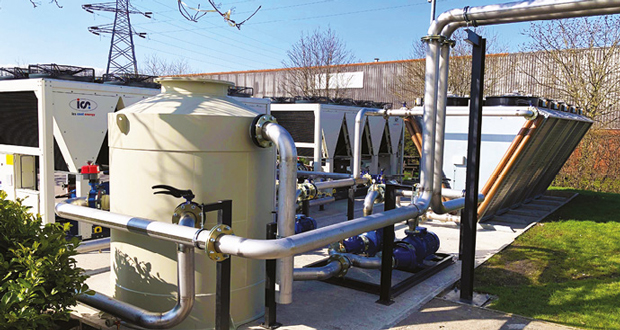 With rising energy prices, investing in energy efficiency can provide real savings, ensure superior process performance and real financial outcomes particularly in industrial sites, says Dave Palmer, General Manager for the UK and Ireland at ICS Cool Energy
With rising energy prices, investing in energy efficiency can provide real savings, ensure superior process performance and real financial outcomes particularly in industrial sites, says Dave Palmer, General Manager for the UK and Ireland at ICS Cool Energy
Heating and cooling accounts for UK’s and Europe’s biggest energy use, so implementing energy efficiency strategies to temperature control applications offers a significant potential to reduce that demand. It is also the right thing to do. Decarbonisation of heavy industrial processes is central to reaching the Government’s target to achieve net zero greenhouse gas emissions in the UK by 2050.
With industry being the third-largest carbon contributor after energy production and transport, energy efficiency measures contribute to the decarbonisation efforts, reduce costs across the system and improve the competitiveness of the UK economy. While facility managers might be intimidated by the task of cutting energy costs, the temperature control industry has been developing the tools, technologies and service offerings needed to meet this demand.
Let’s look at several short and long-term actions that can be easily implemented, to start delivering more efficient systems that will reduce both carbon emissions and energy bills.
ENERGY EFFICIENCY AUDIT
Whether you’re considering a new cooling or heating system or planning to upgrade the existing one, working closely with a partner and expert that is capable of designing or redesigning your cooling and heating systems and can remain as your service provider, is much more important than finding and purchasing the right chiller.
To get a true picture of all areas that need to be addressed, the most comprehensive solution is for the temperature control partner to undertake an energy analysis audit.
An energy audit records the existing energy use as well as usage patterns. It identifies opportunities for energy saving strategies, including technology replacements. Finding opportunities for energy, sustainability and efficiency gains in the case of chillers and temperature control equipment in operation isn’t easy, and decisions on what and how to improve need to be based on hard data. Audits will show the overall measurement results, analysis of these measurements and a proposition of enhancements to the chiller plant.
FREE COOLING
This is the cheapest and greenest way to provide cooling. It allows businesses to reduce mechanical energy consumption, lower the carbon footprint, reduce load on mechanical parts, reduce maintenance costs and extend life. In the case of a chiller, smaller load demands can also lessen the depreciation value of the unit over its lifetime. It is a solution that is easy to retrofit (space permitting) and can deliver a quick payback for the new equipment.
 Practically any organisation using an externally sited chiller to cool their process can benefit from free cooling. Whenever the outside temperature is low enough to cool down the process fluid without the intervention of a chiller (mechanical cooling), you can implement a free cooling solution. This can be in the form of partial free cooling (where the chiller’s compressors are still doing some of the work to cool) to full free cooling (where the full load on the chiller is offset). In contrast, an externally sited chiller’s compressors with no free cooling capabilities will be working flat out to achieve the same result.
Practically any organisation using an externally sited chiller to cool their process can benefit from free cooling. Whenever the outside temperature is low enough to cool down the process fluid without the intervention of a chiller (mechanical cooling), you can implement a free cooling solution. This can be in the form of partial free cooling (where the chiller’s compressors are still doing some of the work to cool) to full free cooling (where the full load on the chiller is offset). In contrast, an externally sited chiller’s compressors with no free cooling capabilities will be working flat out to achieve the same result.
Depending on the time of the year, as the ambient air temperature continues to fall, the amount of process heat taken out of the process fluid by the air increases, progressively reducing the load on the chiller. At five degrees Celsius below the process supply fluid temperature, all the process heat is removed by the ambient air in the free cooler – providing full free cooling. This makes free cooling the cheapest and greenest way to provide cooling.
In the UK, Ireland and much of Western Europe, the relatively cool climate and ambient temperatures allow for partial or full free cooling for much of the year. This means that substantial energy savings can be achieved particularly between the months of October and April, in some cases reaching up to 80 per cent electricity savings.






